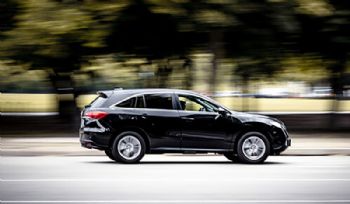
According to High Wycombe-based Emissions Analytics, pollution from tyre wear can be 1,000-times worse than that coming out of a car’s exhaust.
The company says harmful particulate matter from tyres — and brakes — is a very serious (and growing) environmental problem. It is being exacerbated by the increasing popularity of large heavy vehicles such as SUVs, and the growing demand for electric vehicles, which are heavier than standard cars because of their batteries.
“Furthermore, vehicle tyre wear pollution is completely unregulated — unlike exhaust emissions, which have been rapidly reduced by car makers thanks to the pressure placed on them by European emissions standards.
"New cars now emit very little in the way of particulate matter, but there is growing concern around ‘non-exhaust emissions’ — NEEs.
"These are particles released into the air from brake wear, tyre wear and road surface wear, plus the re-suspension of road dust during on-road vehicle usage. No legislation is in place to limit or reduce NEEs, but they cause a great deal of concern for air quality.”
NEEs are currently believed to constitute the majority of primary particulate matter from road transport; and the 2019 report ‘Non-Exhaust Emissions from Road Traffic’ by the UK Government’s Air Quality Expert Group recommended that NEEs should be recognised as a source of ambient concentrations of airborne particulate matter, even for vehicles with zero exhaust emissions of particles — such as EVs.
To understand the scale of the problem, Emissions Analytics performed some initial tyre-wear testing. Using a popular family hatchback running on brand-new correctly inflated tyres, it found that the car emitted 5.8gm of particles per km.
“Compared with regulated exhaust emission limits of 4.5mgm per km, the completely unregulated tyre wear emission is higher by a factor of over 1,000.
"This figure could be even higher if the vehicle had tyres that were under-inflated, or the road surfaces used for the test were rougher, or the tyres used were from a budget range — all very recognisable scenarios in real-world motoring.”
Nick Molden, CEO of Emissions Analytics (
www.emissionsanalytics.com), said: “The challenge to the industry and regulators is an almost complete ‘black hole’ of consumer information, undone by out of date regulations still preoccupied with exhaust emissions.
"In the short term, fitting higher-quality tyres is one way to reduce these NEEs, along with tyres that are always inflated to the correct level. Ultimately, though, the car industry may have to find ways to reduce vehicle weight too.”